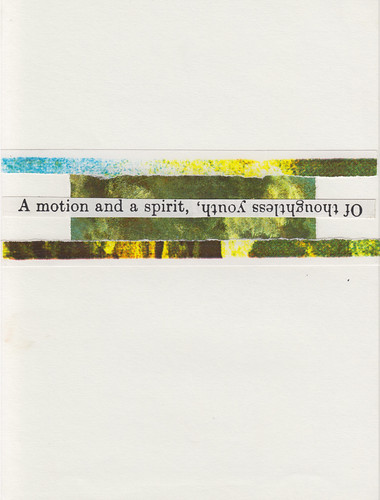
I’ve been scanning some of the collages which I’ve made over the decades, some dating back to the late 1980s. Most of these are primarily visual constructions, usually collaging together images from magazines, sometimes with added washes of water colour and PVA. They are things that I made haphazardly and occasionally, they don’t follow any particular considered process or plan, they are casual, intuitive, opportunist, although occasionally relate to other work, mostly film or video, that I might have been making at the time. I seem to have stopped making them when I started using digital media; some of my earlier digital-based works took collage form, so it’s probably reasonable to assume that digital media more or less took over from physical material in my work generally. As a result I’ve found it interesting to return to these works, digitising simply as a way to preserve and archive them, also as a way to ‘exhibit’ them online, although in the case of this particular collection, in doing so can introduce new problems.
These particular collages were made in an A5 size cartridge paper sketch book in 1995. I had already started using digital media at that point so these represent a different impulse. They were made while I was back in London for six months, after having lived in, and before returning to Melbourne. As such I didn’t have access to computers. The collages were made from lines cut out of Wordsworth’s 'Lines Composed a Few Miles above Tintern Abbey, On Revisiting the Banks of the Wye during a Tour. July 13, 1798', and the use of that text was certainly a reaction to being back in England; thinking about Romanticism, and the internalisation of landscape, perhaps as a response to coming from the Australian context, perhaps as a way of turning around the way that the Australian landscape was, in the earliest days of European settlement, often depicted as a colonial extension of the English pastoral. ‘Turning around’ literally as I cut out and placed the text in such a way as it was unclear as to how it should be read, in the sense of which way up to turn the page, whether to read across, or down, or both, and how... and in some cases using the very physical materiality of the sketch book to construct text that would be obscured, so obscure, vignetted by masks cut in the page so that the next page’s text would be revealed on turning the page. These are very much works of physical media that can never fully appreciated in digital form, for here, in scanning them, their orientation becomes fatally fixed.
No comments:
Post a Comment